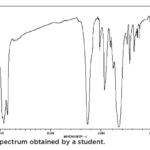Choosing the right graph to compare data can be challenging. This guide explores various comparison charts and graphs, outlining their best uses to help you effectively visualize your data and uncover hidden insights.
Data visualization is crucial for understanding patterns and trends. When comparing data, selecting the appropriate graph is paramount for effective communication. This article delves into different comparison chart types and offers guidance on choosing the best fit for your data.
Understanding Comparison Charts
A comparison chart visually contrasts different data sets, revealing relationships and patterns that aid informed decision-making. Clearly visualized data simplifies complex information, enabling quick comprehension and better evaluation.
7 Effective Comparison Chart Types
Several chart types facilitate data comparison, each with unique strengths:
1. Pie Chart
A pie chart displays the proportions of different categories within a whole. It’s commonly used in marketing, finance, and sales to show percentage-based comparisons.
Best Use: Comparing parts of a whole, highlighting proportions.
2. Bar Chart
Bar charts compare different categories using rectangular bars, with lengths proportional to their values. They can be horizontal or vertical.
Best Use: Comparing values across categories, analyzing numerical data across groups.
3. Histogram
Histograms illustrate the frequency distribution of numerical data within specific intervals or bins.
Best Use: Showing the distribution of numerical data, analyzing frequency within ranges.
4. Line Chart
Line charts connect data points with lines, showcasing trends and patterns over time or across categories.
Best Use: Visualizing trends, summarizing fluctuations, making predictions.
5. Doughnut Chart
Similar to pie charts, doughnut charts represent proportions but with a central hole, allowing for additional information or emphasis.
Best Use: Highlighting relationships between categories and subcategories, emphasizing the whole and its parts.
6. Overlapping Area Chart
Overlapping area charts combine aspects of bar and line charts, showing multiple data series and overall trends.
Best Use: Comparing multiple data series with part-to-whole relationships, illustrating changing trends.
Note: Overlapping too many data series can create visual clutter.
7. Combo Chart
Combo charts combine different chart types, such as bar and line charts, to represent diverse data types within a single visualization.
Best Use: Comparing different data types simultaneously, displaying complex patterns.
Choosing the Right Comparison Diagram
Selecting the most effective chart hinges on several factors:
Understanding Data Type
Identify whether your data is categorical, numerical, or time-series. This foundational step guides your chart selection.
Objectives of Comparison
Define the story you want to convey. Are you highlighting differences, showing relationships, or illustrating composition?
Data Size and Complexity
Consider the volume and intricacy of your data. Large datasets might overwhelm certain chart types.
Prioritizing Clarity
Ensure your chart is easily understandable. Avoid clutter, use clear labels, and maintain consistent design.
Pros and Cons of Comparison Charts
Pros: Easy to create, simple visualization, versatile for various data types, effective storytelling, aids in data analysis and decision-making.
Cons: Potential for misinterpretation, difficulty visualizing complex variables, requires common parameters for comparison.
Conclusion
Comparison charts are invaluable tools for data analysis and communication. By understanding the various types and considering your data’s characteristics, you can choose the perfect graph to illuminate insights and drive informed decisions. Consider tools like Ninja Tables and Ninja Charts for creating interactive and visually appealing comparisons within WordPress. For more complex visualizations, explore libraries like d3.js or chart.js.
